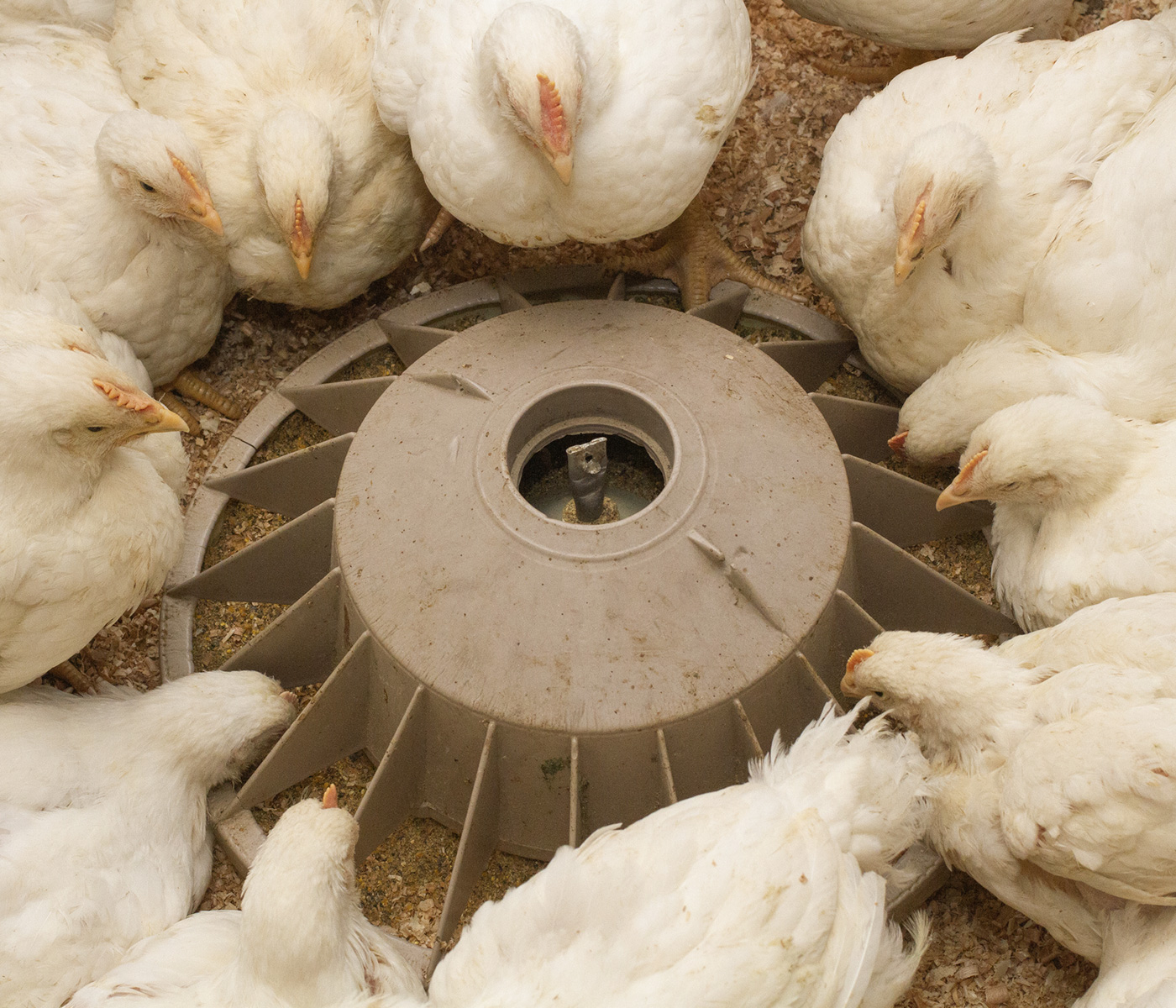Adequately feeding replacement pullets during the rearing period is essential to achieve optimal average weight and good uniformity; this will […]

Adequately feeding replacement pullets during the rearing period is essential to achieve optimal average weight and good uniformity; this will have a direct impact on the performance of the flock during the laying phase. We interviewed Dr Gonzalo G. Mateos to enquire about the key points to getting better results during rearing.
Dr. Gonzalo González Mateos holds a es Doctorate in Veterinary Medicine from the Autonomous University of Barcelona, and a Doctorate in Animal Science (Poultry) from the University of Iowa. He is a professor at the Superior Technical School of Agronomic Engineering of Madrid. He is also founder member of the Spanish Foundation for the Development of Animal Nutrition (FEDNA).
It is important not to make severe mistakes at any moment of the rearing period, although failures are more frequent in the first weeks of life and in the pre-peak period. During the first weeks of life it is necessary to achieve a good uniformity. In the pre-peak period, between weeks 16 and 26, it is necessary to contemplate the different nutrient requirements, particularly regarding calcium, amino-acids, and fat.
It is not advisable to have birds that are too light, because that is a sign of poor development. At the same time, overweight birds will result in increased mortality. The key is always to achieve good uniformity, which will allow us to make logic management decisions. In flocks with poor uniformity, it will be difficult to decide whether to prioritise the light birds or the heavy birds, complicating the management. For example, if the birds are given rations with excess of nutrients, the heavy birds will become overweight, leading to mortality problems; at the same time, light, poorly developed birds will also die due to eggs being too big for their frame.
Feeding crumbles to replacement pullets until 4-weeks of age helps to achieve higher weight and uniformity in the flock, but the pullets may have suboptimal gut development. Therefore, our decision should be made based on our main objective
Why would not be convenient to feed crumbles to replacement pullets older than 10 weeks?
From week 10 onwards we need to achieve a good development of the pullet’s digestive tract. In other words, it is necessary to potentiate the function of the gizzard by taking its pH as low as possible; this could be achieved by feeding a coarse mash. If we offer a very fine crumble, the gizzard will not work properly, and the digestive tract will have more problems to develop.
Generally, in pullets, feed presentation does not especially affect nutrient digestion, although it can be important in the starter phase of broilers and pullets. However, pellets with finely ground ingredients will increase the consumption but impair the functioning of the gizzard.
A gizzard that does not work properly will result in an excessively high pH. Consequently, pepsinogen will not be activated, and protein digestion will be impaired.
On the other hand, in young birds, excessive amount of starch in the feed may reduce its digestibility. This is the result of an increased rate of passage. If, because of an impaired gizzard’s function, too much starch reaches the small intestine, then the digestibility of the feed will be lower.
THE ELECTROLYTE BALANCE IS OF VITAL IMPORTANCE IN ALL TYPES OF ANIMALS, AND PARTICULARLY IN LAYERS.
The electrolyte balance is of vital importance in all type of animals, and particularly in layers. The problem is that, in practice, we are not entirely capable of managing it.
It is important to consider two aspects of this substitution:
In practice, most nutritionists modify the electrolyte balance of feed by reducing the amount of salt and including bicarbonate. This common practice is not questionable when considering electrolyte balancing. However, when palatability or feed pH are contemplated, I disagree with this substitution because reducing salt impairs feed palatability. Furthermore, high doses of bicarbonate could slightly affect gizzard pH, which is not convenient.
This interview was originally published in agriNews Spanish edition, as “Nos entrevistamos con el Dr. Gonzalo Glez. Mateos”
Subscribe now to the technical magazine of animal nutrition
AUTHORS

Nutritional Interventions to Improve Fertility in Male Broiler Breeders
Edgar Oviedo
The Use of Organic Acids in Poultry: A Natural Path to Health and Productivity
M. Naeem
Synergistic Benefits of Prebiotics and Probiotics in Poultry, Swine, and Cattle
Gustavo Adolfo Quintana-Ospina
Hybrid Rye Potential in Laying Hen Feed Rations
Gwendolyn Jones
A day in the life of phosphorus in pigs: Part I
Rafael Duran Giménez-Rico
Use of enzymes in diets for ruminants
Braulio de la Calle Campos
Minerals and Hoof Health in the Pregnant Sow
Juan Gabriel Espino
Impact of Oxidized Fats on Swine Reproduction and Offspring
Maria Alejandra Perez Alvarado